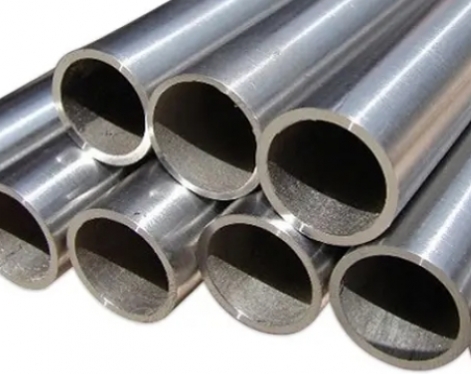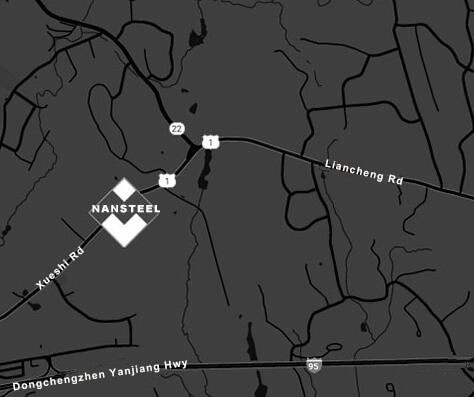The marking method of seamless steel pipes is usually determined according to the standard regulations and purpose. The marking method can include information such as the material, specification, production process, and size of the pipe. Nansteel Manufacturing Co., Ltd has carefully summarized the following common seamless steel pipe marking methods:
Marked according to national standards (GB standards)
In China, the marking of steel pipes usually follows national standards (GB/T) or industry standards. Taking GB/T 8162 (seamless steel pipes for structures) as an example, the marking method includes the following elements:
For example, the marking format of seamless steel pipes in GB/T 8162-2008 standard is usually as follows:
Steel pipe standard (GB/T standard) + material grade + outer diameter x wall thickness
GB/T 8162-2008 20# 50×3.5
GB/T 8162-2008: indicates that the seamless steel pipe complies with the GB/T 8162-2008 standard.
20#: indicates that the material grade of the steel pipe is No. 20 steel.
50×3.5: indicates that the outer diameter of the steel pipe is 50mm and the wall thickness is 3.5mm.

Classification by purpose
The marking method of seamless steel pipe can also be classified according to its use. Common uses are:
Seamless steel pipe for structure (GB/T 8162)
Seamless steel pipe for fluid transportation (GB/T 8163)
Boiler pipe (GB/T 3087)
Petroleum cracking pipe (GB/T 9948)
High-pressure boiler pipe (GB/T 5310)
The marking method usually includes:
Purpose (such as boiler tube) + material brand + outer diameter x wall thickness + standard number
Boiler tube 20G 42×4
Boiler tube: indicates that the steel tube is used in boiler system.
20G: indicates that the material is 20G (high temperature alloy steel).
42×4: indicates that the outer diameter is 42mm and the wall thickness is 4mm.
Marking by material grade
The material of the steel pipe can be marked as steel grade. Common materials include: No. 20 steel (low alloy steel), No. 45 steel (medium carbon steel), Q235 (carbon steel), 304 stainless steel, etc. The marking method will vary depending on the steel grade.
For example: 45 89×6
45: indicates that the steel pipe is made of No. 45 steel.
89×6: indicates that the outer diameter is 89mm and the wall thickness is 6mm.
Marking by outer diameter and wall thickness
In the marking of seamless steel pipes, the outer diameter and wall thickness are very important parameters, which are usually expressed in the form of "outer diameter × wall thickness".
For example: 76×4
76: The outer diameter is 76mm.
4: The wall thickness is 4mm.
Marking according to the manufacturing standard of steel pipe
The marking of steel pipes can also be carried out according to the manufacturing standards they meet, such as: American ASTM standards, European EN standards, etc.
For example: ASTM A106 Gr.B 3/4"
ASTM A106: Indicates compliance with ASTM A106 standard (for high-temperature steam pipes).
Gr.B: Indicates that the pipe is made of Grade B material.
3/4": Indicates that the outer diameter is 3/4 inches.
Special performance marking of pipelines
For some seamless steel pipes with special properties, their special properties, such as corrosion resistance and wear resistance, etc., need to be indicated during marking.
Stainless steel pipe 304 50×3.0
Stainless steel pipe: indicates that the material of the steel pipe is stainless steel.
304: indicates that the material of the steel pipe is 304 stainless steel.
50×3.0: indicates that the outer diameter is 50mm and the wall thickness is 3.0mm.
Other standards and marking methods
In addition to the common standard marking methods mentioned above, more technical details and special requirements may be involved, such as:
API standard: seamless steel pipes used in the petroleum industry, generally marked as API 5L or API 5CT, etc.
Pressure vessel pipeline: pipelines that comply with ASME standards or other international standards.
Conclusion
The marking method of seamless steel pipe involves many aspects, including material, standard, outer diameter, wall thickness, purpose, etc. The marking content will be different according to the actual application requirements. Understanding and correctly marking the specifications of seamless steel pipes will help ensure their applicability and safety in actual applications.
Read more: What is the Profit Margin of the Seamless Steel Pipe Industry?
Marked according to national standards (GB standards)
In China, the marking of steel pipes usually follows national standards (GB/T) or industry standards. Taking GB/T 8162 (seamless steel pipes for structures) as an example, the marking method includes the following elements:
For example, the marking format of seamless steel pipes in GB/T 8162-2008 standard is usually as follows:
Steel pipe standard (GB/T standard) + material grade + outer diameter x wall thickness
GB/T 8162-2008 20# 50×3.5
GB/T 8162-2008: indicates that the seamless steel pipe complies with the GB/T 8162-2008 standard.
20#: indicates that the material grade of the steel pipe is No. 20 steel.
50×3.5: indicates that the outer diameter of the steel pipe is 50mm and the wall thickness is 3.5mm.

Classification by purpose
The marking method of seamless steel pipe can also be classified according to its use. Common uses are:
Seamless steel pipe for structure (GB/T 8162)
Seamless steel pipe for fluid transportation (GB/T 8163)
Boiler pipe (GB/T 3087)
Petroleum cracking pipe (GB/T 9948)
High-pressure boiler pipe (GB/T 5310)
The marking method usually includes:
Purpose (such as boiler tube) + material brand + outer diameter x wall thickness + standard number
Boiler tube 20G 42×4
Boiler tube: indicates that the steel tube is used in boiler system.
20G: indicates that the material is 20G (high temperature alloy steel).
42×4: indicates that the outer diameter is 42mm and the wall thickness is 4mm.
Marking by material grade
The material of the steel pipe can be marked as steel grade. Common materials include: No. 20 steel (low alloy steel), No. 45 steel (medium carbon steel), Q235 (carbon steel), 304 stainless steel, etc. The marking method will vary depending on the steel grade.
For example: 45 89×6
45: indicates that the steel pipe is made of No. 45 steel.
89×6: indicates that the outer diameter is 89mm and the wall thickness is 6mm.
Marking by outer diameter and wall thickness
In the marking of seamless steel pipes, the outer diameter and wall thickness are very important parameters, which are usually expressed in the form of "outer diameter × wall thickness".
For example: 76×4
76: The outer diameter is 76mm.
4: The wall thickness is 4mm.
Marking according to the manufacturing standard of steel pipe
The marking of steel pipes can also be carried out according to the manufacturing standards they meet, such as: American ASTM standards, European EN standards, etc.
For example: ASTM A106 Gr.B 3/4"
ASTM A106: Indicates compliance with ASTM A106 standard (for high-temperature steam pipes).
Gr.B: Indicates that the pipe is made of Grade B material.
3/4": Indicates that the outer diameter is 3/4 inches.
Special performance marking of pipelines
For some seamless steel pipes with special properties, their special properties, such as corrosion resistance and wear resistance, etc., need to be indicated during marking.
Stainless steel pipe 304 50×3.0
Stainless steel pipe: indicates that the material of the steel pipe is stainless steel.
304: indicates that the material of the steel pipe is 304 stainless steel.
50×3.0: indicates that the outer diameter is 50mm and the wall thickness is 3.0mm.
Other standards and marking methods
In addition to the common standard marking methods mentioned above, more technical details and special requirements may be involved, such as:
API standard: seamless steel pipes used in the petroleum industry, generally marked as API 5L or API 5CT, etc.
Pressure vessel pipeline: pipelines that comply with ASME standards or other international standards.
Conclusion
The marking method of seamless steel pipe involves many aspects, including material, standard, outer diameter, wall thickness, purpose, etc. The marking content will be different according to the actual application requirements. Understanding and correctly marking the specifications of seamless steel pipes will help ensure their applicability and safety in actual applications.
Read more: What is the Profit Margin of the Seamless Steel Pipe Industry?









